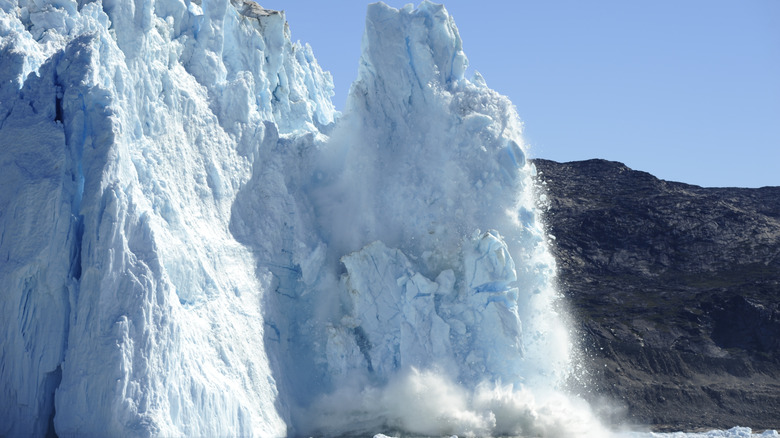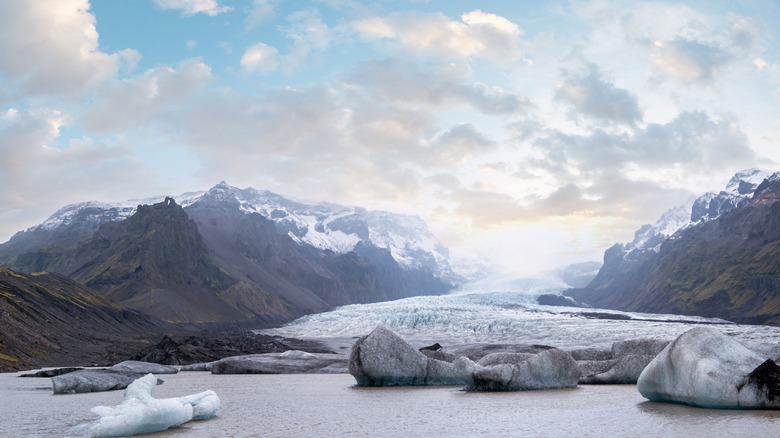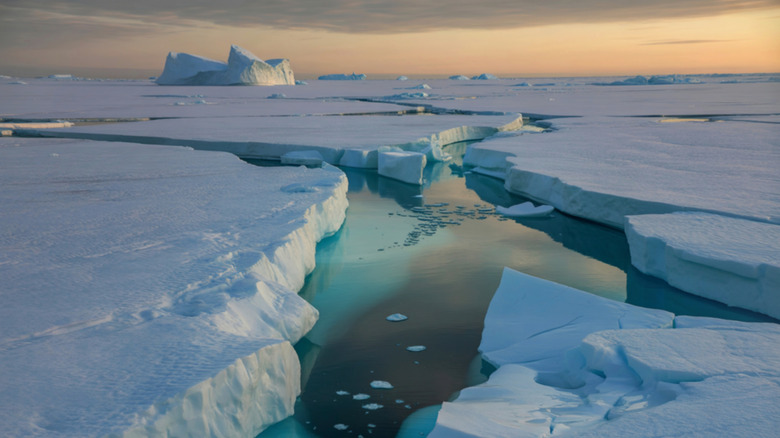Scientists Believe Greenland May Be Hiding A Secret Lake Under The Ice
An article published in Nature Geoscience on July 30th, 2025 explores an event that happened in 2014 but was only recently discovered thanks to archives of satellite images. The Greenland Ice Sheet covers a number of subglacial lakes. One of those lakes flooded, and in 2014, it broke through the glacier's surface and released huge amounts of water. Why is this important? Because the subglacial lake was previously undiscovered, and its flooding had a massive effect on the ice sheet.
Satellites revealed the shocking impact this subglacial lake flooding had. It released 23.8 billion gallons of meltwater across 10 days. That's an average of over 25,000 gallons of water per second. It created a crater 279 feet deep and 0.77 square miles wide. In addition, it produced blocks of ice that were 130 feet high, cracked the ice sheet, and created more fractures in the surrounding area.
Originally, that area was thought to be frozen solid. This event challenges long-held assumptions about how meltwater moves through ice sheets. The research findings suggest that current climate models underestimate how Greenland's ice will respond to future global warming.
How the Greenland secret lake impacts our geological understanding
The study highlights that over the past 30 years, around 169 billion tons of Greenland's ice has been lost each year due to increased surface melting. The same surface melting that contributes to the sea level rising. As Arctic temperatures continue to warm, meltwater is expected to become more widespread. While there is an understanding that surface meltwater can reach the ice bed and influence glacier movement, there's still uncertainty about how the water travels, how much is stored, and how it impacts the environment as a whole.
One emerging concern is Greenland's hidden network of subglacial lakes. As seen in 2014, these lakes can suddenly drain and unleash huge volumes of water from beneath the ice, affecting the surface and flow. These events are poorly understood, rarely observed, and not adequately included in climate models.
The sudden flood of the subglacial lake disrupted the hydrological system beneath the Greenland Ice Sheet and had an impact on the nearby Harder Glacier. By analyzing over 5,800 ice velocity maps from 1985 to 2020, the researchers observed that although the glacier had been accelerating since 2014, a sharp deceleration occurred immediately after the 2014 flood event, which was three times more than the typical seasonal slowdown. The study suggests the floodwater temporarily boosted the subglacial drainage system's efficiency, resulting in slower movement.
What can be learned from the Greenland subglacial flood
The researchers proposed a new hypothesis to explain the flooding. Instead of the typical surface fractures forming directly above a water source, the study suggests that intense shear stress built up along the frozen base of the ice sheet pushed outward and forced a crack to deflect upward through the ice. This process is known as hydrofracture, and may have been made more intense by shifting glacier flow patterns that weakened the ice. The study notes that a similar drainage event in 1990 did not create surface fractures; thus, the type of upward fracturing that occurred may only happen under specific conditions.
In order to confirm this hypothesis, more observation is needed on how these fractures happen and how they impact ice sheets as a whole. With this information, an improved model can be created to help current geological understanding and to better predict the future regarding melting ice sheets.
The lead author of the study, Jade Bowling of Lancaster University, stated to Space.com, "The existence of subglacial lakes beneath the Greenland Ice Sheet is still a relatively recent discovery, and — as our study shows — there is still much we don't know about how they evolve and how they can impact on the ice sheet system." She went on to say, "Importantly, our work demonstrates the need to better understand how often they drain, and, critically, what the consequences are for the surrounding ice sheet."


